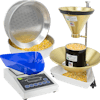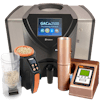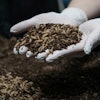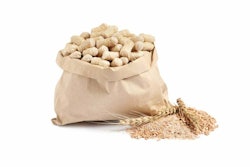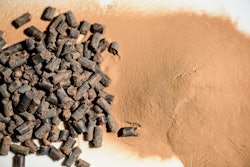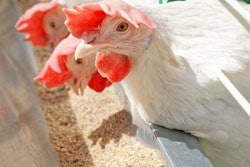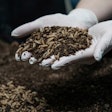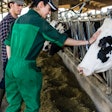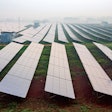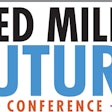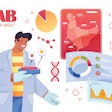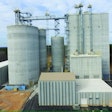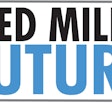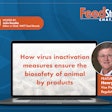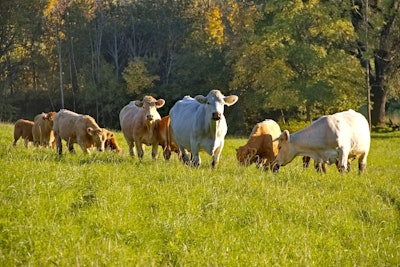
Feed optimization, sustainability and animal health were the focal points of theDSM World Nutrition Forum, held May 8-10 in Cancun, Mexico. And, experts said, collecting and utilizing data in the right ways will lead to desirable outcomes in those areas.
Approximately 800 people attended the event, which included species-specific breakout sessions for beef, dairy, poultry, swine and aqua production.
Industry experts explained that technologies that can gather information from animals and their environment can tell a complete story when used correctly.
“We can actually link all the data together and be able to give a complete, holistic overview of what is happening within the animal itself,” said Nicola Walker, global principal scientist atDSM-Firmenich. “This gives us an opportunity to gain new insights to mine the data for little gold nuggets, which will give us further insights on how we can further innovate to improve on animal health and performance while still being highly sustainable.”
It’s all about using the “right technologies in the right place, based on data,” according to Luis Tamassia, global innovation lead, ruminants, at DSM-Firmenich.
“Let’s select the right actions, the right feed additives, the right technologies to apply to that particular condition so that we can improve performance and reduce the current rate,” he said. “And, for data, we must have digital solutions available to speed up the process to understand the data, interpret the data, because if you don’t have data, you cannot improve what you don’t measure.”
That data can also be used to tell the story about sustainability, he added.
“这是真正重要的适当的通信n about meat production and sustainability based on facts, data and solutions. Also, higher profitability of farm operation is extremely important, and the feed additives are a key element for that,” Tamassia said. “Another important element is digital solutions. Nowadays, we have digital data in software, not only to help farmers to have better farm management but also to interpret the data in the right way, helping them to set the right targets. And once they have the targets, they are able to select the right tools to reach the targets – improve profitability, performance and sustainability.”
Stephane Duval, global innovation science lead, swine, at DSM-Firmenich, said there are even more aspects of animal production that should be considered as well.
“We are obviously looking at improvement on the performance side – feed efficiency, daily weight gain – but also all the all the parameters that we can think about, like for instance, health status, and the broader pressure brought to us by society in terms of environmental concerns and also animal welfare.”
All of these parameters can be brought together with precision nutrition, said Raj Murugesan, head of global poultry at DSM-Firmenich.
“With poultry being the cheapest protein and especially given the current inflation, the interest is abound in terms of how to make it more sustainable, how to use more precision technologies in poultry to make it cost effective as well,” he said. “Precision nutrition, this is going to be one of the key aspects of how we can really connect those different factors that can influence the bird’s life, the longevity, the persistency, performance, through changes in microbiome, and how we can really predict the disease outbreaks before they happen. … How far we are looking at our baseline in terms of feeding the birds and their health and how often we can really monitor that, and how that’s going to help us in predicting future diseases. So, this is where microbiome is going to play a huge role in bringing all this together.”
Focus on the microbiomecan also help tackle some of the challenges in animal production, Duval added.
“We should stop considering the microbiome in isolation. We should start considering the microbiome as an organ by itself,” he said. “And then we realize that all these metabolites produced by the microbiome can also be measured, can become biomarkers, but most importantly, they are also able to interact and to inform the host animal and to drive the behavior of these animals. They can help us answer some of the problems that our industry is getting.”
Challenges along the sustainability journey
Eighty-six percent of ingredients in animal feed is not fit for human consumption, Murugesan said. By utilizing ingredients that otherwise would go to waste, the animal feed industry is contributing to sustainability. However, use of alternative raw materials can bring some challenges.
“We are trying to reduce feed costs by using alternative raw materials. … But when we introduce alternative raw materials, the challenges also abound in terms of how the nutrients from those materials are utilized, or lack thereof, and what can we do to overcome those challenges in terms of utilization?” he said.
In the aquaculture industry, higher inclusion of plant-based ingredients increase the risk of antinutritional factors and mycotoxins, which cost the industry US$5 billion to US$10 billion per year, according to Ester Santigosa-Culi, global innovation lead, aquaculture, at DSM-Firmenich.
“That’s a massive number in terms of economics, but we also need to educate the farmers and the final consumers on the cost,” she said.
Like her colleagues, she also pointed to “the need to create metrics, and then apply these metrics to define the sustainable targets that we want for our industry. … Sustainability is a must.”

